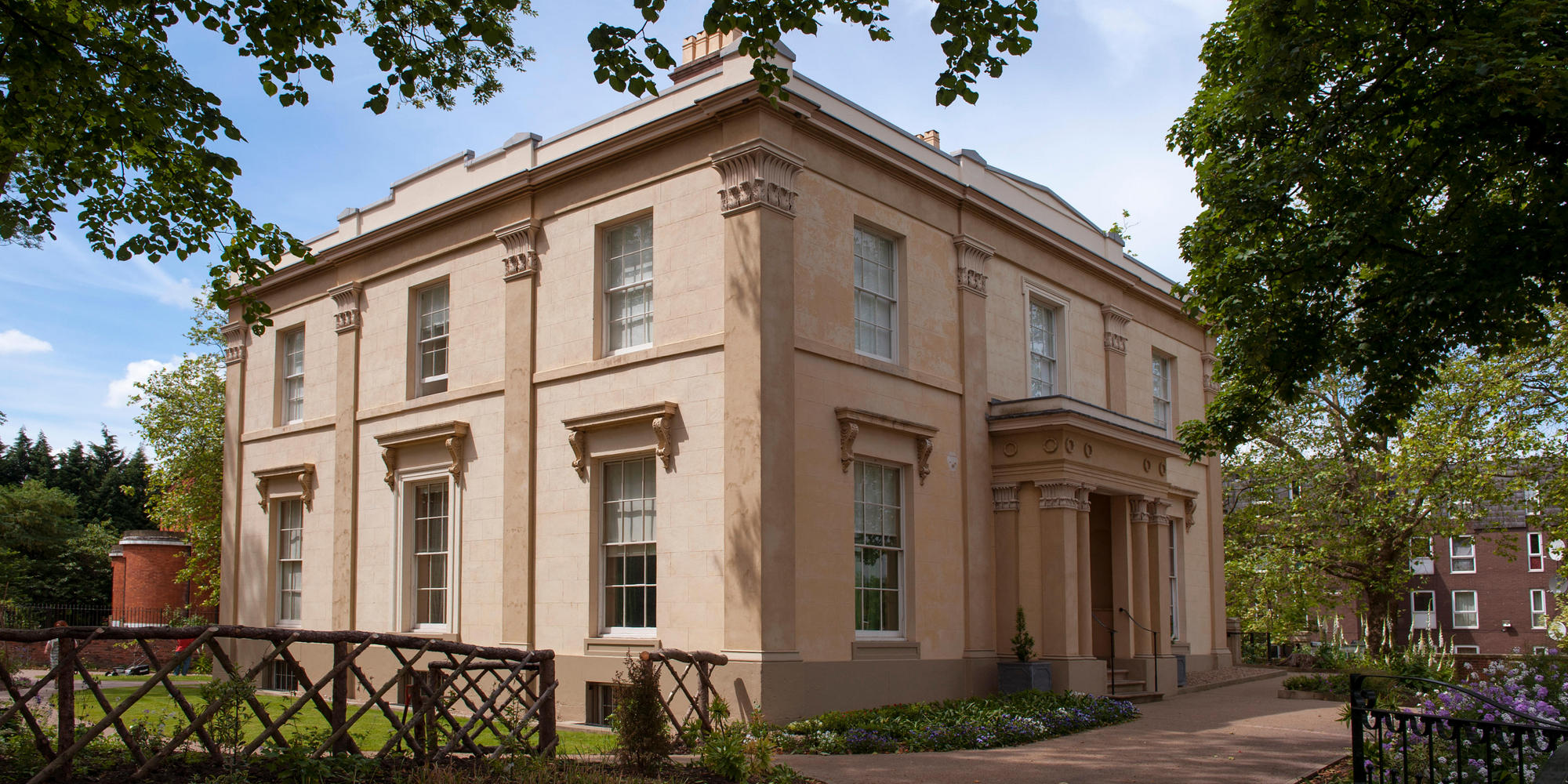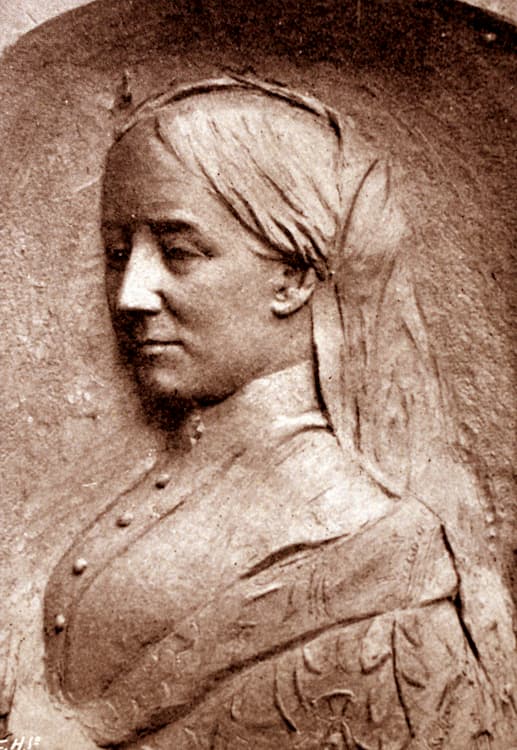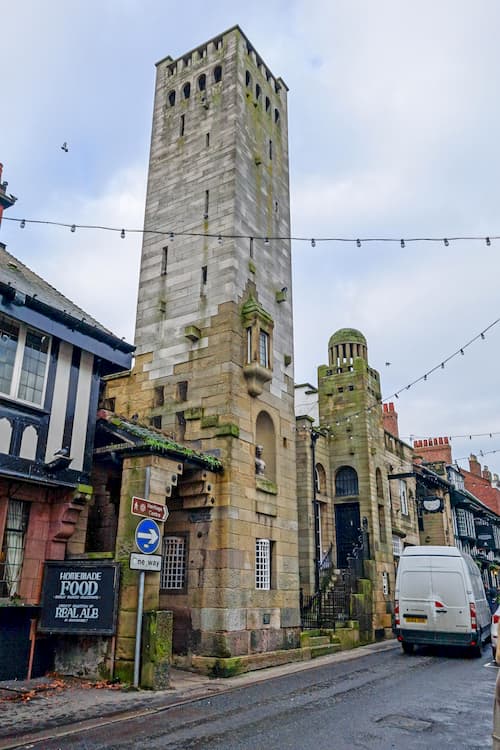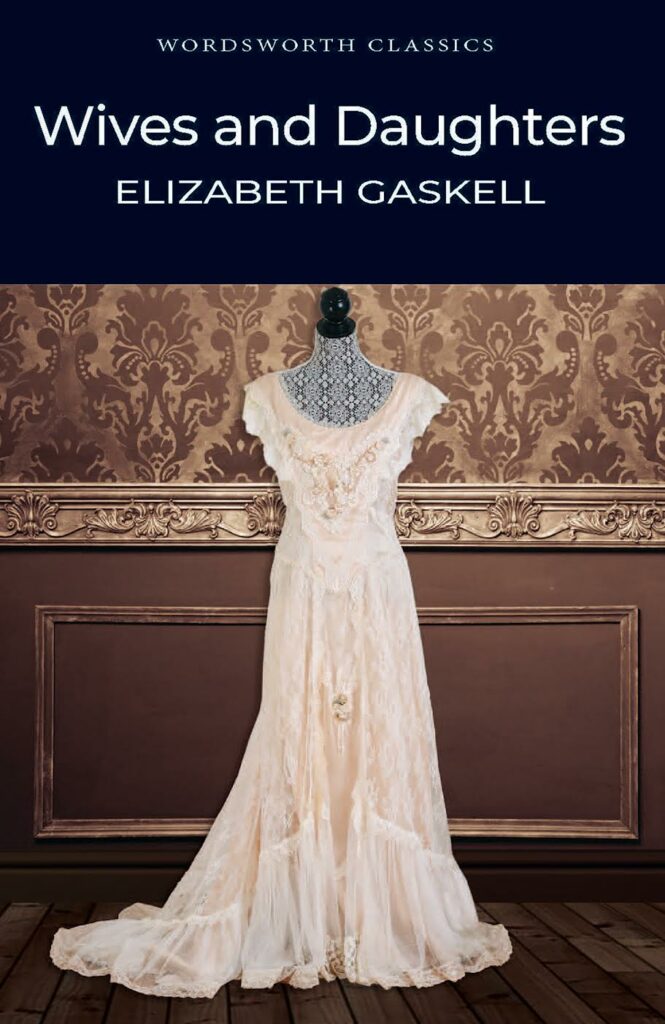
Elizabeth Gaskell and ‘Wives and Daughters’
Denise Hanrahan Wells looks at Elizabeth Gaskell’s final novel
Elizabeth Gaskell died in 1865 leaving behind a wide range of works – novels, novellas, short stories, poetry and non-fiction. Her final novel, Wives and Daughters lay unfinished, just shy of the final chapter or so. There is some common ground here between Elizabeth Gaskell and the later writer Edith Wharton, who died before the completing the final chapters of The Buccaneers (1938). Both writers had their incomplete novels published posthumously. Both writers decided to set their final works in an earlier time. Edith Wharton, writing in the 1930s, decided to return to the 1870s in The Buccaneers. Elizabeth Gaskell, writing in the 1860s, returned to the 1820s in Wives and Daughters. It is interesting, that at this stage of their lives, both writers decided to revisit a bygone age. Elizabeth Gaskell and ‘Wives and Daughters’
In some ways it is difficult to know where to start with Wives and Daughters. It is a large, and in some ways, a complex novel spanning some 580 plus pages. At the heart of the novel is the story of young Molly Gibson and her journey from childhood into maturity and the relationships she forms with those around her. However, in many ways, this is an oversimplification of a very rich text. Gaskell explores some complex issues and the novel contains many carefully drawn characters. It features not only birth, marriage and death, but secrets and lies, conflict and humour, and is much more than a simple tale of Molly’s maturation. It opens in a fairy-tale like manner:
To begin with the old rigmarole of childhood. In a country there was a shire, and in that shire there was a town, and in that town there was a house, and in that house there was a room, and in that room there was a bed, and in that bed there lay a little girl; wide awake and longing to get up, but not daring to do so for fear of the unseen power in the next room…
The ‘unseen power’ is Betty the maid, and the little girl is the aforementioned Molly. The ‘sing-song’ rhythmic nature and the use of repetition is a little like a nursery rhyme, but it also achieves an image which moves from a wide view to a specific focus. Whether you find this opening endearing or a little off-putting, please forge ahead as you will not be disappointed.
Like many Victorian novels, Wives and Daughters was initially serialized in the Cornhill Magazine, beginning in August 1864 and concluding in January 1866. Frederick Greenwood, the editor of Cornhill provided the ending using Gaskell’s notes and information from her family. Cornhill had previously serialized her work, Cousin Phillis. Initially, Gaskell was reluctant to write for the magazine after her friend and publisher George Smith had approached her, fearing a higher standard would be required than Household Words and All the Year Round, published by Charles Dickens. She was also cautious as her friendship with Dickens had become somewhat strained following a number of disagreements over such issues as the word limit of North and South and the ending of her short story ‘The Old Nurse’s Story’. She had complied with Dickens on the former, but stood her ground regarding the latter. Nevertheless, she outlined the plot of her new venture which she envisaged as a triple decker novel. She need not have worried as the serialized version of Wives and Daughters was very well received by a reading public who eagerly awaited each new instalment. Elizabeth Gaskell and ‘Wives and Daughters’

Cast of Elizabeth Gaskell
The early chapters establish Molly’s happy life living with her widowed father, the local doctor. The fairy-tale theme continues initially as Molly becomes overwhelmed at the much-anticipated Gala Day which had caused her early and excited awakening in the opening paragraph. This is held at the resplendent Towers, one of the homes of local aristocracy Lord and Lady Cumnor. Molly seeks solace in the gardens, loses her way in the hot sunshine and falls asleep in the shade of a cedar tree. She is embarrassed to be discovered by two ladies who turn out to be the Cumnor’s married (and titled) daughter and their former governess Clare, now widowed. Clare creates quite an impression on Molly: ‘She was the most beautiful person she had ever seen, and she was certainly a very lovely woman. Her voice, too, was soft and plaintive…’ (Chapter 2). Clare takes care of Molly who is now suffering from heatstroke and orders some cool water and lunch, most of which she consumes herself. Clare’s charm starts to slip slightly as she does not correct the assumption that Molly ate all of the hearty lunch, and was probably ill through over-eating. Molly is taken to rest in one of the bedrooms but is anxious about missing her ride home and pleads with Clare:
‘Please ask somebody to waken me if I go to sleep. I am to go back with the Miss Brownings.’
‘Don’t trouble yourself about it, dear, I’ll take care’, said Clare… And then she went away and thought no more about it.
Thus, the most beautiful creature Molly had ever seen turns out to be untrue to her word. Molly is discovered much later by the maids who come to make up the room, long after all the carriages have departed. Poor little Molly is awestruck and fearful of the aristocratic Cumnors and when Lord Cumnor says in his best Daddy Bear voice ‘Are you the little girl who has been sleeping in my bed?’ she fears his anger is real as she has never read the ‘Three Bears’. Her fear deepens as he continues with his jokes, making reference to Sleeping Beauty and it appears as though Molly will have to spend the night at the Towers. Fortunately, and greatly to her relief, her father comes to the rescue on his horse, along with her pony, and she is able to return home.
The narrative skims over the ‘calm monotony of life’ (Chapter 4) and we next encounter Molly at the age of seventeen in the appropriately titled Chapter 5 ‘Calf-Love’. The Calf-Love in question refers to the infatuation of one of Dr Gibson’s students for Molly. The poor lovestruck student is fast dispatched from the premises before Molly becomes aware of his ardour. This leads Dr Gibson to decide he needs to take a wife to provide Molly with a feminine influence over her moral development. His thoughts are further confirmed when he receives an unexpected visit from Lord Hollingford who observes the rumpled and rather stained tablecloth. Hollingford suggests Dr Gibson should remarry:
… if you found a sensible, agreeable women of thirty or so, I really think you couldn’t do better than to take her to manage your home, and so save you either discomfort or wrong; and, beside, she would be able to give your daughter that kind of tender supervision which, I fancy, all girls of that age require. (Chapter 9)
Thus, the fairy-tale tone has vanished. There is no hint of romance. Marriage is merely a practicality and Molly soon gains a stepmother and a stepsister.
This is not too much of a spoiler though, as this occurs quite early on in the novel. Molly is not encumbered with a wicked stepmother a la Cinderella, however, the new Mrs Gibson soon proves herself to be somewhat shallow and self-obsessed. She immediately makes plans to remodel the house deeming it too rustic for her refined tastes. On their first evening home after the honeymoon, she is disappointed her husband is urgently called out to tend to a patient and bemoans to Molly:Elizabeth Gaskell and ‘Wives and Daughters’
‘… I think your dear papa might have put off his visit to Mr Craven Smith for just this one evening.’
‘Mr Craven Smith couldn’t put off his dying.’ said Molly bluntly.
‘You droll girl!’ said Mrs Gibson, with a faint laugh. ‘But if this Mr Smith is dying, as you say, what’s the use of your father’s going off to him in such a hurry? Does he expect a legacy, or anything of that kind?’ (Chapter 15) Elizabeth Gaskell and ‘Wives and Daughters’
Many of the moments featuring Mrs Gibson have touches of wry humour about them and it is no accident she is frequently depicted producing endless decorative but useless embroidery, and is highly critical of any intelligent conversation. Gaskell uses this self-interested character to highlight the importance of education for women lest they turn out like vain Mrs Gibson.

Elizabeth Gaskell Tower, Knutsford
Biographer Jenny Uglow[1] suggests simply drawing out the thread of Molly’s story is a huge over-simplification in such a rich tapestry of a novel, and I must agree, even though this is what I have just done. The community of characters Gaskell created in her earlier novel Cranford is achieved with even greater skill in this text. As the title suggests, familial relationships take centre stage, but not just in the sense of wives and daughters. There are generational conflicts such as those within the Hamley family between the Squire and his sons Osborn and Roger. This makes way for some deeper contextual issues to be explored through the anti-Catholic and anti-French attitudes held by the Squire, and the political context of Tory versus Whig as well as the roles of science and art in late 1820s society. The rise of science and knowledge forms an important plot point and it is no coincidence that Elizabeth Gaskell had previously begun to map out ideas for the novel whilst on holiday in Edinburgh after visiting her relative Charles Darwin. Initially she had some difficulties deciding upon a title and it could be she was inspired by the title of Ivan Turgenev’s 1862 novel Fathers and Sons, particularly as both writers were aware of each other through mutual friends.
Wives and Daughters is often thought of as Gaskell’s masterpiece and it is all the more remarkable when considering the extreme pressure she was under both personally and professionally. Producing an instalment each month required working to a tight schedule, although she found Cornhill less pressurized to write for as she was given more freedom than in her previous dealings with Dickens and Household Words. However, there were many calls on her time during this period, as there were problems within her own family. Her eldest daughter Marianne had been engaged to her second cousin Thurston for some time. Thurson’s father was not happy about the engagement as he wanted his son to make a more financially advantageous marriage, a theme which made its way into Wives and Daughters. In addition, her second daughter Meta was recovering from health issues. To add to her stress levels, she was also involved in a house purchase which her beloved husband knew nothing about, a venture which would have been highly unusual in Victorian times. Her plan was to buy The Lawn, near Alton in Hampshire, far away from industrial Manchester, as a place for her husband to retire to. She was using money from her novel to finance the deal, but even in the nineteenth century, house purchases were far from straightforward and this no doubt added to her stress levels.
Although Elizabeth Gaskell was unable to complete what many have described as her best novel, the point at which she leaves off, and the concluding remarks offered by the editor of Cornhill provide a satisfying close to the narrative. So, allow Molly to lead you through the fortunes and trials of the Gibsons, Hamleys and many more interesting characters.
[1] Jenny Uglow, Elizabeth Gaskell: A Habit of Stories (London: Faber and Faber, 1999)
Main image: Elizabeth Gaskell House, Manchester. Credit: Allotment boy 1 / Alamy Stock Photo
Image 1 above: Cast of Elizabeth Gaskell (1810-1865) Credit: World History Archive / Alamy Stock Photo
Image 2 above: Elizabeth Gaskell Memorial Tower and King’s Coffee House, King Street, Knutsford, Cheshire. Credit: John Keates / Alamy Stock Photo
For more information on Elizabeth Gaskell’s life and works, visit: The Gaskell Society
Details of Elizabeth Gaskell’s house can be found here: elizabethgaskellhouse.co.uk
Our full range of her titles, including our collection of her excellent ghost stories, can be found here
Elizabeth Gaskell and ‘Wives and Daughters’
Elizabeth Gaskell and ‘Wives and Daughters’
Elizabeth Gaskell and ‘Wives and Daughters’
Elizabeth Gaskell and ‘Wives and Daughters’
Elizabeth Gaskell and ‘Wives and Daughters’
Books associated with this article
